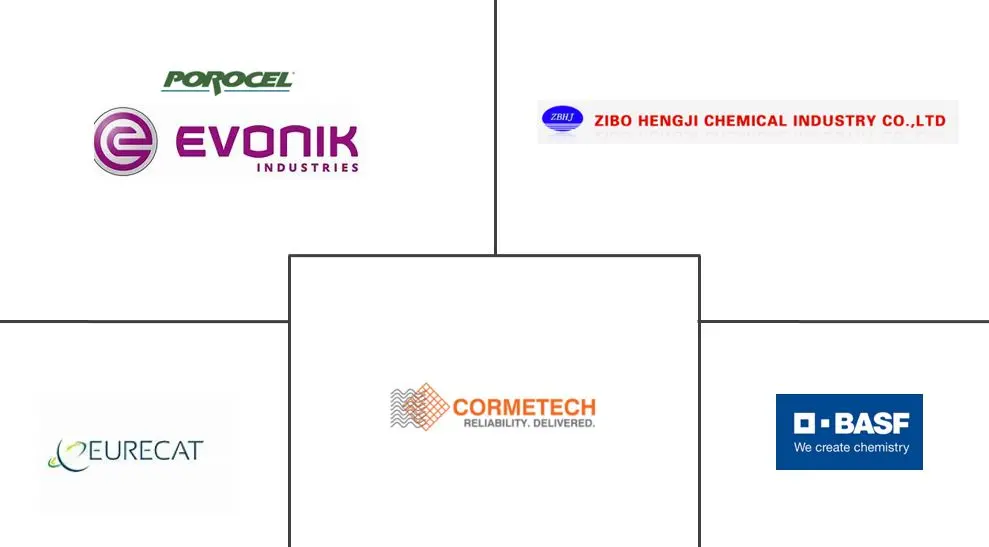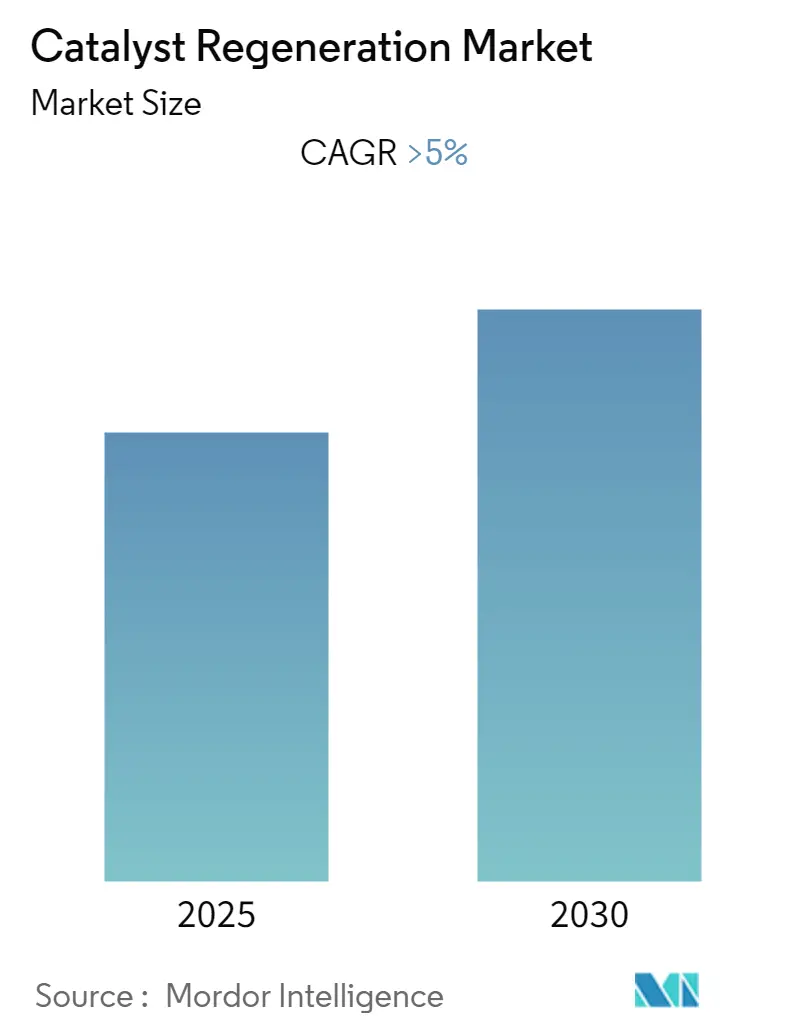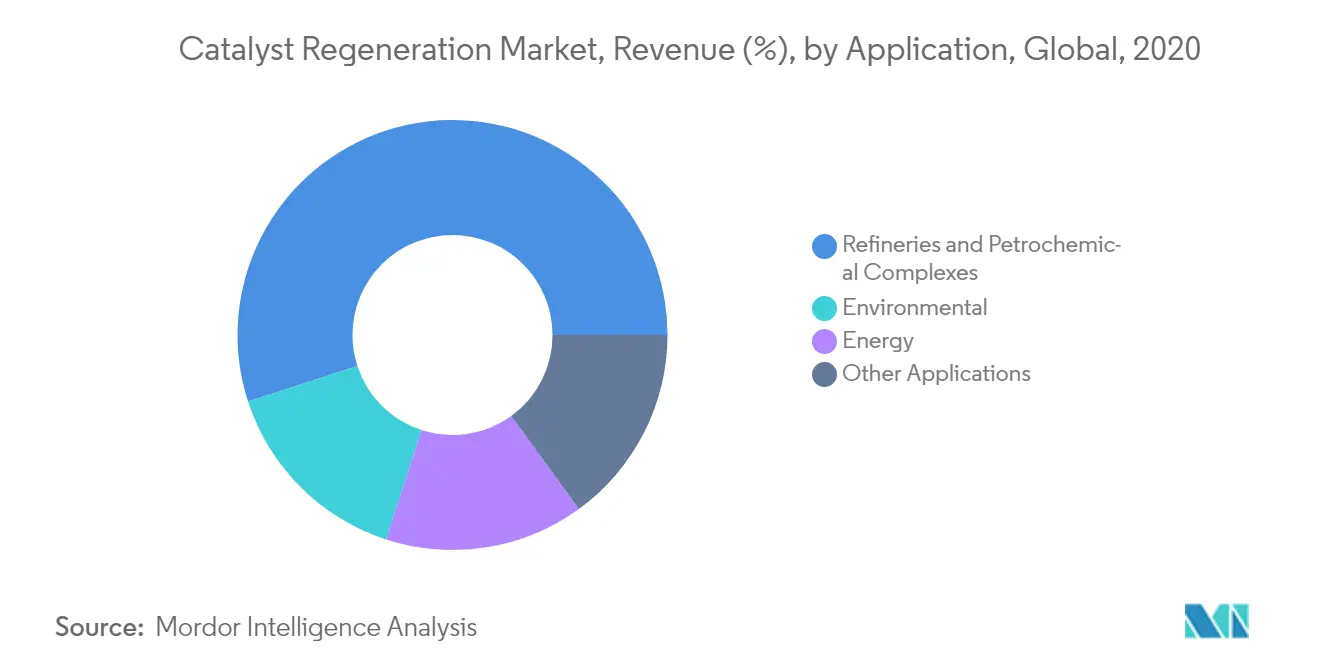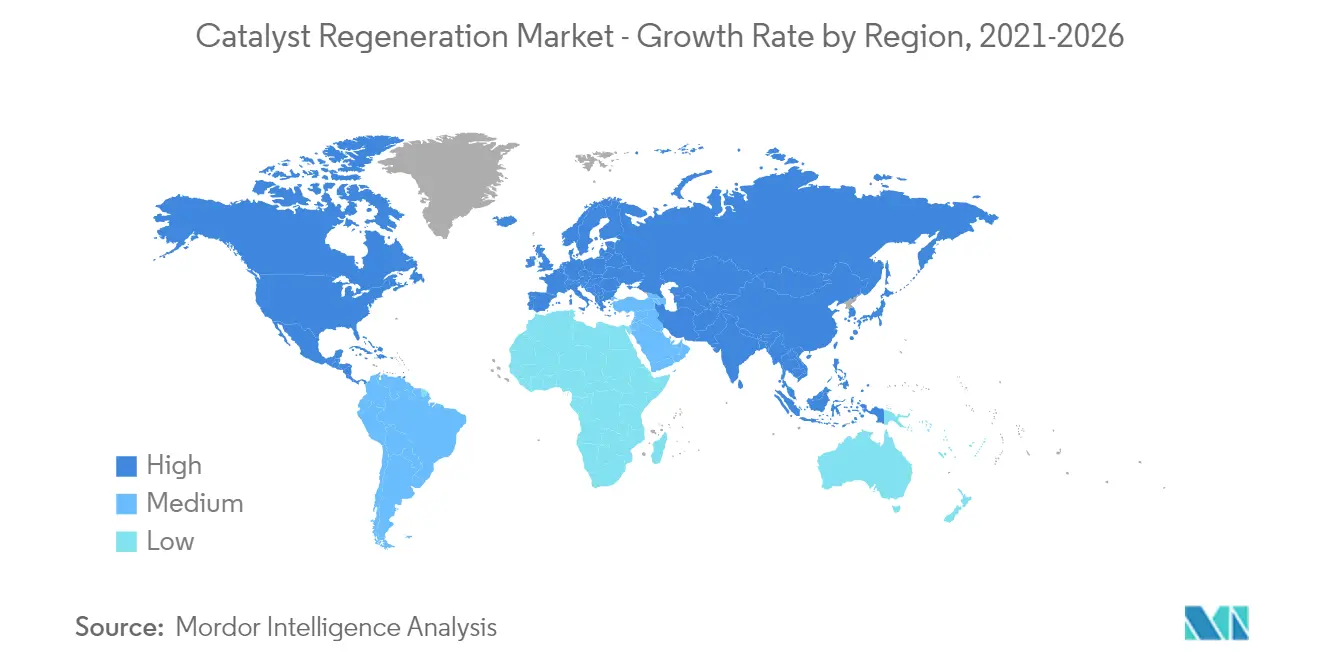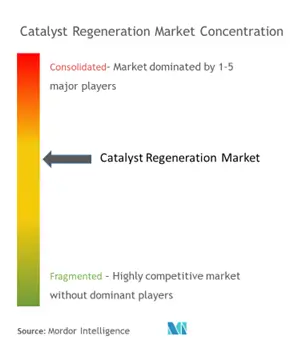Catalyst Regeneration Market Analysis
The Catalyst Regeneration Market is expected to register a CAGR of greater than 5% during the forecast period.
The Refineries and Petrochemical Complexes segment is expected to dominate the catalyst regeneration market over the forecast period.
Asia-Pacific dominated the catalyst regeneration market and is also forecasted to be the fastest-growing market during the forecast period owing to the increasing consumption for countries such as China, India, and ASEAN Countries, among others.
Catalyst Regeneration Market Trends
Refineries and Petrochemical Complexes Segment to Dominate the Market
Catalysts play a major role in petroleum refining since most of the processes beyond the crude unit are catalytic. Several straight-run fuels that are produced through fractional distillation do not meet the standards for low-sulfur and higher-octane fuels. Thus, these crude unit fractions are processed further. An increase in fuel octane number can be achieved through catalytic reforming and isomerization processes, both of which are catalytic in nature.
During the functioning of catalyst, it may be poisoned by any number of contaminants in the feed. Its surface, void spaces, and pores may be fouled by carbon that is produced by cracking and condensation reactions. There are six mechanisms for the deactivation of catalysts used in petroleum refining, including poisoning, fouling, thermal degradation, vapor compound formation, vapor-solid, and solid-solid reactions, and physical damage to the catalyst support. Crude oil contains sulfur and certain metals, such as nickel and vanadium, which act as poisons for many refinery processes, like catalytic reforming. A chemical poison may act in several ways to deactivate the catalyst. The adsorption of these particles on catalyst physically blocks multiple reaction sites. They also prevent or bring down the surface diffusion of adsorbed reactants.
With the ongoing increase in the strict regulations related to the disposal of spent catalysts, and steps to make the overall refining process more economical, the consumption of regenerated catalysts is expected to grow at a healthy rate in the coming years, in refining application
China to Dominate the Asia-Pacific Market
- China is one of the fastest-growing economies, globally. Furthermore, almost all the end-user industries have been witnessing growth, owing to the growing population, living standards, and per capita income.
- The Chinese manufacturing sector is one of the major contributors to the country's economy. The range of Chinese goods includes cement, chemicals, textiles, toys, electronics, ships, rail cars, automobiles, and aircraft, among other products.
- China is a hub for chemical processing, accounting for a major chunk of the chemicals produced globally. The country contributes more than 35% of global chemical sales. The chemical industry is another prominent end-user industry in China. Many major companies in the market have their chemical plants in China. With the growing demand for various chemicals, globally, the demand for precious metal catalysts from this sector is projected to grow during the forecast period.
- Polyolefins, such as polyethylene and polypropylene, are widely used in the production of these products. Thus, China has become a significant location for the manufacturers and exporters of plastic products. Currently, China is a major producer and consumer of polyolefins, worldwide. The demand for polypropylene increased by 4.7% over the recent past.
- However, owing to the COVID-19 pandemic, the market was affected in the early 2020 but recovered towards the end of the year.
Catalyst Regeneration Industry Overview
The global catalyst regeneration market is partially consolidated with the major payers accounting for a decent share of the market. The market is highly dynamic with the leading players aiming to increase their market share through product innovation, capacity expansions, and mergers & acquisitions. The major players in the market include Eurecat, CORMETECH, Zibo Hengji chemical Co., Ltd., Evonik Industries AG (Porocel), and BASF SE, among others.
Catalyst Regeneration Market Leaders
-
Eurecat
-
CORMETECH
-
BASF SE
-
Zibo Hengji chemical Co., Ltd.
-
Evonik Industries AG (Porocel)
- *Disclaimer: Major Players sorted in no particular order
Catalyst Regeneration Market News
- In July 2021, BASF has expanded its chemical catalyst recycling capacity and capability with the acquisition of Zodiac Enterprises LLC in Caldwell, Texas.
Catalyst Regeneration Industry Segmentation
The catalyst regeneration process renews catalysts, making them reusable. Regenerated catalysts are used in several processes such as steam and naphtha reforming. Apart from these, these catalysts are also used in various processes including hydrogenation, alkylation, hydrocracking, hydro-desulfurization, and hydro-treatment, among others. The catalyst regeneration market is segmented by method, application, and geography, By the method, the market is segmented into Ex Situ and In Situ. By application, the market is segmented into Refineries and Petrochemical Complexes, Environmental, Energy & Power, and Other Applications. The report also covers the market sizes and forecasts for the Catalyst Regeneration market in 17 countries across major regions. For each segment, the market sizing and forecasts have been done on the basis of revenue (USD million).
| Method | Ex Situ | ||
| In Situ | |||
| Application | Refineries and Petrochemical Complexes | ||
| Environmental | |||
| Energy & Power | |||
| Other Applications | |||
| Geography | Asia-Pacific | China | |
| India | |||
| Japan | |||
| South Korea | |||
| ASEAN Countries | |||
| Rest of Asia-Pacific | |||
| North America | United States | ||
| Canada | |||
| Mexico | |||
| Europe | Germany | ||
| United Kingdom | |||
| France | |||
| Italy | |||
| Russia | |||
| Rest of Europe | |||
| South America | Brazil | ||
| Argentina | |||
| Rest of South America | |||
| Middle-East and Africa | Saudi Arabia | ||
| South Africa | |||
| Rest of Middle-East and Africa | |||
Catalyst Regeneration Market Research FAQs
What is the current Catalyst Regeneration Market size?
The Catalyst Regeneration Market is projected to register a CAGR of greater than 5% during the forecast period (2025-2030)
Who are the key players in Catalyst Regeneration Market?
Eurecat, CORMETECH, BASF SE, Zibo Hengji chemical Co., Ltd. and Evonik Industries AG (Porocel) are the major companies operating in the Catalyst Regeneration Market.
Which is the fastest growing region in Catalyst Regeneration Market?
Asia-Pacific is estimated to grow at the highest CAGR over the forecast period (2025-2030).
Which region has the biggest share in Catalyst Regeneration Market?
In 2025, the Asia-Pacific accounts for the largest market share in Catalyst Regeneration Market.
What years does this Catalyst Regeneration Market cover?
The report covers the Catalyst Regeneration Market historical market size for years: 2019, 2020, 2021, 2022, 2023 and 2024. The report also forecasts the Catalyst Regeneration Market size for years: 2025, 2026, 2027, 2028, 2029 and 2030.
Our Best Selling Reports
Catalyst Regeneration Industry Report
Statistics for the 2025 Catalyst Regeneration market share, size and revenue growth rate, created by Mordor Intelligence™ Industry Reports. Catalyst Regeneration analysis includes a market forecast outlook for 2025 to 2030 and historical overview. Get a sample of this industry analysis as a free report PDF download.

